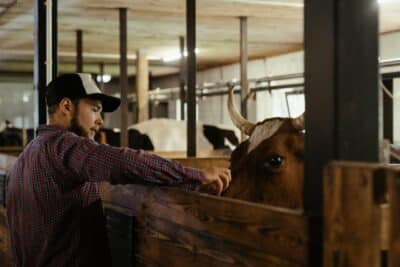Raising cattle is hard work. However, for cattle farmers willing to learn and adapt to rapid changes and challenges, success is possible. If you aren’t sure where to begin raising cattle or have just started and are out of your depth, even an experienced producer can lean back on the basics. From how to care for them to having a profit plan, here are the most helpful tips for raising cattle.

IMAGE: PEXELS
Choose The Right Cattle Breed
Different cattle work better in different climates. Always choose your type of cattle based on the breed, the weather conditions they can withstand, and how difficult it is to care for their health. For some farmers, this might eventually lead to crossbreeding and raising several types of cows.
Manage Your Facilities
Cattle management facilities should be efficient, support safe cattle handling, and keep cattle comfortable and not stressed. From fences to chutes, calf pens, barns, and more, ensure facilities are regularly evaluated, maintained, and cleaned. Ensure cattle have regular access to water and consistent electricity, keeping facilities well-lit and warm for your animals.
Create And Maintain A Financial Plan
A financial plan is necessary to provide your cattle with what they need. Include budgets, tax records, insurance policies, and investment strategies. Identify what you need for utilities, feed, labor, equipment, fertilizer, and other operational costs. Look at tax incentives and grant programs, if any are available to you. Reinvest as much as you can in raising cattle, which will pay off in dividends.
Care For Your Land
Care for your land. Research soil quality, various feed management systems, and forage production amounts. There should be enough forage to sustain your livestock. However, different types of cattle consume different amounts.
Monitor the land. Use pasture grazing techniques to improve forage quality. Use soil tests to determine if modifications need to be made. Work to achieve optimal nutrition for your cattle.
Feed And Hydrate Cattle
Cattle need water year-round, even in winter when water sources freeze. Cattle need 1-2 gallons of water per 100 pounds. Have it heated and accessible. Dehydrated cows are at higher risk of colic and impaction. Water uptake is required to keep your cows healthy, typically done by installing tank heaters at the water source to keep the water warm.
It can be expensive to provide cattle with premium nutrient-dense feed with all the fats and proteins they need. This is where strategies such as feed hay, hay feeders, and seemingly endless amounts of grass for cattle to graze come into play. Rotational grazing is a critical piece of the puzzle to learn, sectioning off areas at certain times.
The More Space, The Better
For cattle to be comfortable, they need space. The more space, the better. Extra bed space. Extra space for feeding. This involves keeping your herd size appropriate for your capacity. Despite the limitations, your cattle will be less stressed and produce better for you.
Be Cautious When Handling Cattle
Handling cattle is an art. Do not make loud noises or quick movements. Do not leave a single cattle alone as they are herd animals. Do not place yourself between cattle and a wall or gate, as charging is possible. Avoid working alone with cattle. Always have a helper in case anything goes wrong and attention is needed.
Plan And Strategize With A Vet
Injuries, illness, and poor health cost money. The best response is prevention. Plan and strategize with your vet to vaccinate cattle and treat injuries or diseases. Don’t let that linger or spread. Early treatment of illness or disease can dramatically save costs and, most importantly, prioritize animal health.
Carefully Monitor Pregnant Cattle
Pregnant cattle need to be carefully monitored, kept healthy, provided with relevant vaccinations, and nourished. Significantly during winter and harsh weather, extreme temperatures can stress pregnant cattle. You may want to segregate maternity cows into paddocks to ensure they get the nutrition, water, and shelter they need.
Raising Cattle – Jump Into The Work
Raising cattle is not just a full-time job. For many farmers, it is a lifestyle and very rewarding. Commit to raising cattle with passion. Learn what you can and keep learning. Maintain facilities, help new cattle acclimate, and understand how to care for your breeds. Cow farming is hard because of knowing how to listen and respond, and a lot of this comes with experience.
Cattle farming requires ongoing management. Complexities occur. Components fail. Efficiency requires improvement. To produce the strongest cattle possible, analyze and evaluate, finding opportunities to improve your operations.
IMAGE: PEXELS
If you are interested in even more business-related articles and information from us here at Bit Rebels, then we have a lot to choose from.

COMMENTS